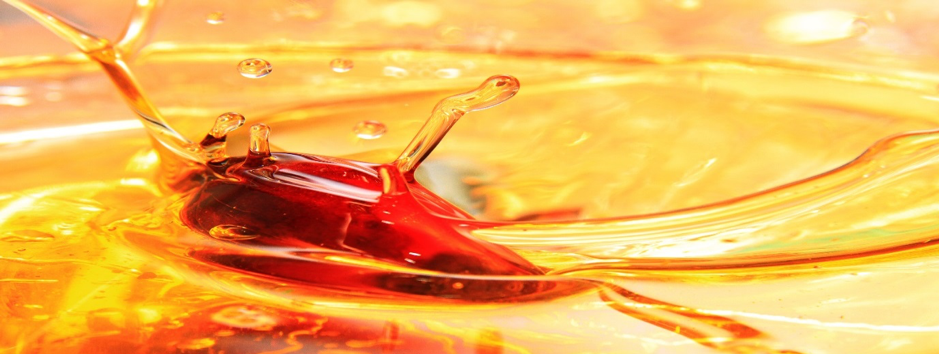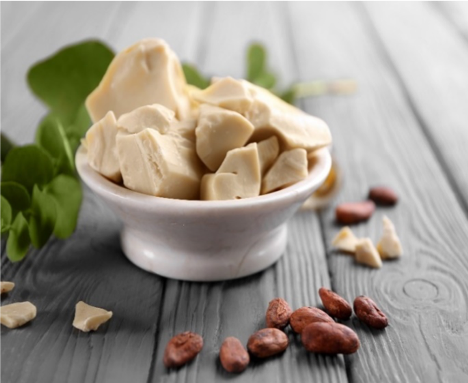
The important and widely used lipid source for food is vegetable oils. Recently, their use for food has been increasing. However, some vegetable oils do not meet consumers’ preference with respect to their physico-chemical properties, texture and stability (Reyes-Hernández et al., 2007).
The properties that affect food value are iodine, peroxide, p-anisidine value, acidity, solidification temperature, colour and appearance. Partial hydrogenation process is introduced to enhance the oxidative stability and plasticity of oils. However, it is well established that it produces trans-fatty acids which have adverse effects on human health. In addition, partial hydrogenation is undesirable for salad dressing, dessert making and for confectionary-based food as it increases the melting point of the oils (Shibasaki and Yamane, 2000).
Blending can maintain the aesthetic value of edible oils and helps in improving their quality, shelf life, stability, utility and nutritional value. Blending does not increase processing cost. Thus, it is widely accepted by food manufacturers (Waghray and Gulla, 2011). However, it is important to note that blending of polyunsaturated with highly saturated oils will reduce the content of linoleic and linolenic acids from the desirable level. This gives an effect similar to partial hydrogenation but without the formation of trans-fatty acid isomers (Naghshineh and Mirhosseini, 2010; Tiwari et al., 2014).

Palm olein has preferable flavour and oxidative stability despite its tendency to crystallize and turn cloudy at low temperatures (Figure 1). Crystallization and cloudiness do not indicate poor quality or that the oil is deteriorating. However, this appearance creates negative perception among consumers. Thus, blending of palm oil with other vegetable oils can minimize crystallization.
According to the World Health Organization (WHO, 2008) healthy oil should have the following characteristic:
- The ratio of saturated, mono- and polyunsaturated should be 1:1.5:1.
- The ratio of linoleic acid (omega-6) and linolenic acid (omega-3) should be 5-10:1.
- Contain antioxidants.
There are no fats and oils that meet all the above characteristics. Most vegetable oils are deficient in Omega-3, an essential fatty acid. Omega-3 is important for the regulation of lipid metabolism, prevention of cancer and cardiovascular diseases (CVDs). Unbalanced ratio of Omega-3 and Omega-6 will lead to diabetes, atherosclerosis, obesity, high blood pressure and cancer (Simopoulos, 2018).
Generally, vegetable oils have different fatty acid composition. None of them have optimum amount of fatty acid (Figure 2) (Johnson et al., 2008). Blending of equal proportions of palm and soybean or other liquid oils produces a blend that meets the recommended guidelines for human diet. Consumption of blended oils has been found to reduce triacylglycerol and cholesterol levels in the blood (Sharma and Lokesh, 2013).

Figure 2. Fatty Acid Composition of Vegetable Oils

The functionality of oil in bakery products can also be improved through blending. This is because bakery and confectionery fats have desirable physico-chemical properties such as melting points, solid fat content (SFC), polymorphic form and spreadability that will influence the final products (Adhikari et al., 2010). For instance, sunflower oil (SFO) is suitable for the production of mayonnaise and salad dressings but it is not suitable for producing margarines or shortenings since it cannot provide structure to the products. On the other hand, palm oil (PO) is very suitable for the production of margarines and shortenings as it is naturally semi-solid. However, PO is not suitable for the production of mayonnaise as it will solidify when stored at cold temperatures.

Another example is cocoa butter which is a major ingredient for confectionery fat. Cocoa butter equivalent, an alternative to cocoa butter is prepared by using a blend of 1,3-dipalmitoyl-2-oleoyl-glycerol-rich fats with fats rich in 1,3-distearoyl-2-oleoyl-glycerol (Kim et al., 2014). Blend of palm mid-fraction, palm stearin and olive oil could also be used to manufacture shortening and cocoa butter substitutes with improved features (Ramli et al., 2014).
The basic ingredients of various food formulations are made up of fats and oils. Some vegetable oils lack certain essential characteristics in their natural form. It has been reported that cardiovascular diseases and obesity are related to consumption of fats and oils. Hence, the need for healthy and stable oils is crucial in everyday life. Blending is a simple, feasible and economical method to alter the physico-chemical and nutritional properties of the oils in a good way and has become a common practice in the food industry. Many studies have shown that blending can provide oils with balanced fatty acid profiles, greater stability with improved contents of antioxidant and bioactive compounds.
References
- Reyes-Hernández, J., Dibildox-Alvarado, E., Charo, M. and Toro-Vazquez, J. (2007). Physicochemical and rheological properties of crystallized blends containing trans-free and partially hydrogenated soybean oil. Journal of Oil and Fat Industries, 84:1081-1093.
- Shibasaki, H. and Yamane, T. (2000). Avoidance of solidification of sesame oil at low temperature by selfinteresterification with immobilized lipase. Bioscience Biotechnology Biochemistry, 64:1011-1015.
- Waghray, K. and Gulla, S. (2011). A freedom of choice–sensory profiling and consumer acceptability of oil blends. Studies on Home and Community Science, 5(1):1–6.
- Naghshineh, M. and Mirhosseini, H. (2010). Effects of frying condition on physicochemical properties of palm olein–olive oil blends. Journal of Food Agriculture and Environment, 8(3–4):175–178.
- Tiwari, M.R., Tiwari, K.K. and Toliwal, D. (2014). Studies on thermal stability of palm–sesame oil blends during deep fat frying. Journal of Scientific and Industrial Research, 73:153–156.
- World Health Organization. (2008). Interim summary of conclusions and dietary recommendations on total fat & fatty acids. In: The Joint FAO/WHO expert consultation on fats and fatty acids in human nutrition, WHO, Geneva.
- Simopoulos, A.P. (2016). An increase in the omega-6/omega-3 fatty acid ratio increases the risk for obesity. Nutrients, 8(3):128.
- Johnson, S., Saikia, N., Mathur, H.B. and Agarwal, H.C. (2009). Fatty acids profile of edible oils and fats in India. Centre for Science and Environment, 1-42.
- Sharma, M. and Lokesh, B.R. (2013). Modification of serum and tissue lipids in rats fed with blended and interesterified oils containing groundnut oil with linseed oil. Journal of Food Biochemistry, 37(2):220-230.
- Adhikari, P., Zhu, X.M., Gautam, A., Shin, J.A., Hu, J.N., Lee, J.H., Akoh, C.C. and Lee, K.T. (2010). Scaled-up production of zero-trans margarine fat using pine nut oil and palm stearin. Food chemistry, 119(4):1332- 1338.
- Kim, S., Kim, I.H., Akoh, C.C. and Kim, B.H. (2014). Enzymatic production of cocoa butter equivalents high in 1-palmitoyl-2-oleoyl-3-stearin in continuous packed bed reactors. Journal of the American Oil Chemists’ Society, 91(5):747-757.
- Ramli, N., Said, M., Mizan, A.B.A., Tan, Y.N. and Ayob, M.K. (2014). Physicochemical Properties of Blends of Palm Mid Fraction, Palm Stearin and Olive Oil. Journal of Food Quality, 37(1):57-62.
Prepared by Sabrina

